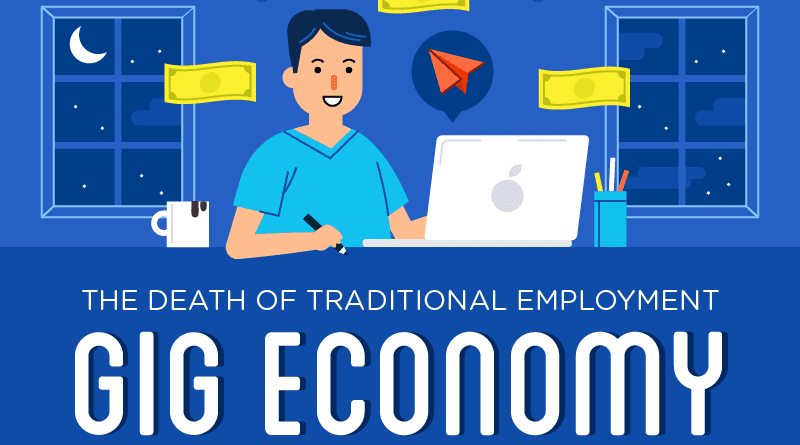Infographic: Gig Economy Statistics
Traditional employment might soon make room for the gig economy. Defined as a free market system where temporary job positions are common, and businesses hire workers for short-term projects, the gig economy is on a path to change how the workforce is hired. Instead of traditional employment, gigs have become extremely popular. As a temporary work assignment, gigs don’t demand full-time employees. Instead, companies are turning to temporary workers who can finish a job and leave.
New technological advancements, like online platforms and communication tools, provided the perfect environment for gig workers to offer their services online. The services can include almost everything, from optimizing a website to office interior design. With so many platforms where gig workers offer their services, businesses can find temporary employees online and hire them for online or in-house jobs.
The gig economy brings benefits to both sides. Companies don’t have to think about hiring employees for permanent job positions, designating the office space, or providing training sessions if necessary. They can enjoy the expert service they don’t have to use regularly, workforce agility, and reduced healthcare costs.
On the other hand, gig workers have a variety of clients, some of which are recurring. They don’t have to think about landing one ideal job position and can enjoy more free time to develop their skills and expand service offerings. The gig economy provides them with enough flexibility to organize their tasks, find more job opportunities, and generate higher income.
According to statistics, the gig economy expands three times faster than the whole US workforce. 29% of employees have some work on the side, and 36% of US employees enjoy gig job opportunities. By 2027, over 50% of the US workforce will probably participate in the gig economy.
Even though the prognosis about the gig economy’s future is excellent, and what today’s market is bringing to the table creates a liberated workforce, some issues and concerns will have to be addressed. Below you’ll read the essential gig economy statistics that provide insight into the benefits, risks, and gig economy trends to understand better how it can change the world.

Yan Anderson is the Head of Content Marketing at CS-Cart with over 10 years of experience in the eCommerce industry. He's passionate about explaining complicated things in simple terms. Yan has expertise in building, running and growing eCommerce marketplaces. He loves to educate people about best practices, new technologies, and trends in the global eCommerce industry.

